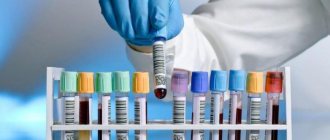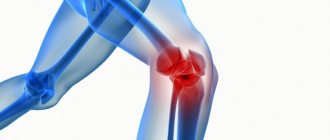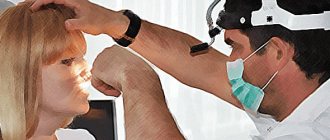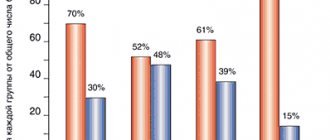Ekaterina Smolnikova
Practicing endocrinologist (10 years of experience). He has extensive experience working in private and public clinics in Russia.
Ask a Question
Last updated August 16, 2021 at 12:12 pm
Blood chylesis - what is it? Most patients who have undergone biochemical tests hear this term for the first time in the doctor’s office. Moreover, an incomprehensible definition causes fear: is this serious and how will it affect the way of life in the future?
Causes
In healthy people, triglyceride levels range from 0.55-1.65 mmol/l. This range of values is due to an increase in blood lipids after eating and the restoration of their concentration after some time. This is the so-called biological variation associated with metabolic processes occurring in the body. Physiological causes of lipemia also include the age of the patient. It has been officially proven that the concentration of simple fats in the blood increases significantly every 5 years. A value of 2.3 mmol/l is considered the maximum permissible. Higher values are a sign of disease.
The causes of chyle are excessive intake of fatty foods into the body and insufficient absorption of triglycerides by tissues. Similar processes can occur both in the body of healthy people under the influence of certain factors, and in people with severe somatic pathology.
Diseases that lead to the development of serum chylosis:
- Disorders of lipid metabolism caused by endocrinopathies - dysfunction of the pancreas and thyroid glands, excessive accumulation of fat in the body.
- Damage to liver hepatocytes caused by alcohol or viral intoxication and occurring in the form of hepatitis, cirrhosis, fatty hepatosis.
- Kidney dysfunction - nephrotic or nephritic syndrome, deterioration or cessation of organ function.
- Hereditary predisposition to lipemia.
- Pathology of lymphoid tissue.
Chylosis is not a separate, independent nosology. Secondary hypertriglyceridemia is a manifestation of serious diseases:
- atherosclerotic processes,
- cardiovascular and respiratory failure,
- hypertension,
- inflammation of the joints,
- bronchial asthma,
- acute pancreatitis,
- some genetic abnormalities
- thalassemia,
- glycogenosis.
Such pathological processes require a comprehensive examination of the patient and a set of therapeutic procedures.
Factors contributing to the development of triglyceridemia: severe stress, increased levels of calcium or glucose in the blood, anorexia nervosa, hyper- or hypocoagulation, pregnancy, taking certain medications - diuretics, corticosteroids, beta-blockers. Chylosis can be provoked by alcohol abuse, fatty and fried foods, fast food, and smoking.
To accurately determine the cause of chylosis, it is necessary to prepare for donating blood, strictly following all medical recommendations. Pathology is often detected visually. In laboratory conditions, using modern equipment, the lipemia index is automatically determined. Errors in performing blood tests can lead to the development of weak chylosis.
Mechanism of occurrence
Knowing what it is - blood chyle and how it occurs, you can prevent the formation of this disorder. Fats enter the body when certain foods are consumed. After this, under the influence of gastric juice during the digestion of food, their structure changes with the formation of fatty acids and glycerol.
When broken down, these substances enter the small intestine, where they combine and return to their original form. In this form, fats are part of the smallest structures that enter the bloodstream. Then they penetrate into various human organs and tissues, where there is a danger of their deposition or the formation of more complex compounds.
Symptoms
Chylosis has no characteristic symptoms. It is detected incidentally and is considered a diagnostic finding. The clinical picture of lipidemia depends on the causative disease. General manifestations of the disease are associated with obesity, metabolic disorders, and liver dysfunction. They are so insignificant that patients simply do not notice changes in their well-being.
In cases of lipid metabolism disorders, the following manifestations are observed:
- increase in the volume of subcutaneous fat,
- poor exercise tolerance,
- dyspnea,
- increased appetite,
- hypertension,
- weakness, loss of strength,
- hyperhidrosis,
- swelling of tissues,
- sleep disorder
Liver diseases are manifested by common symptoms:
- heaviness and pain in the right hypochondrium,
- dyspepsia - nausea, heartburn, vomiting, belching,
- asthenia - lethargy, apathy, impotence, lack of appetite,
- jaundice – itching of the skin, changes in the color of urine, stool, sclera and skin,
- abnormal stool, flatulence, discomfort and rumbling in the stomach,
- hepatomegaly.
Thyroid dysfunction is clinically accompanied by:
- swelling of the limbs and puffiness of the face,
- burning, tingling, myalgia, stiffness and weakness in the hands,
- dry skin, brittle nails and dull hair, hair loss,
- lethargy,
- weight gain,
- hypothermia,
- constant chilliness,
- deterioration of memory and attention,
- insomnia or drowsiness,
- bad mood, melancholy, depression,
- bradycardia, arterial hypertension,
- headache.
It is these clinical signs that force the patient to see a doctor. Chylosis is discovered accidentally during blood tests.
What is “serum chylosis”: interpretation of medical terminology
Often the question of what chylosis is in a blood test arises among patients who have personally encountered a problem in this category. This condition of the blood can be diagnosed exclusively by analysis using a biochemical method, which involves examining the biomaterial after it has settled, which is accompanied by the separation of the main components from the plasma, or so-called serum.
In laboratory conditions, using specific reagents, specialists act on plasma, which allows them to record its quantitative and qualitative composition. In its normal state, biological fluid is a substance of a transparent or yellowish hue, of medium thickness. In situations where it is determined in laboratory conditions that the blood serum is white and resembles sour cream in thickness, specialists diagnose chylosis. Such a visual and consistent difference between the substance and the norm is a problematic point for conducting research, since even modern laboratory conditions do not allow for a correct analysis of such blood, which causes the substance to be rejected and the patient to be sent for a repeat donation of biomaterial. The medical explanation for the precedent is the prevailing concentration in the plasma of fatty components called triglycerides.
The verdict “blood chylosis” can be pronounced on any patient, regardless of gender and age, sometimes typical even for small, newborn children. For example, in an infant the cause of the development of pathology may be genetic pathologies associated with weak, hereditary metabolism of fat components entering the body. In adult patients, the range of causes for the development of pathology is more diverse, and in order to prevent the development of this precedent, it is important to thoroughly understand the mechanisms of its occurrence.
Consequences of lipemia
If chyle occurs once, it is considered harmless. The detection of chylous blood several times in a row indicates a severe pathology.
Failure to take the signs of dysmetabolic processes seriously can lead to occlusion of blood vessels, lymphadenitis, and breakdown of red blood cells. These disorders underlie deadly diseases. Persons with chylosis are susceptible to the development of atherosclerosis and its complications - strokes, heart attacks, thromboembolism. In the absence of timely and correct treatment, they develop nutritional obesity and the functioning of the endocrine glands is disrupted.
deposition of fats in the walls of blood vessels with a combination of chylosis and provoking factors, the development of atherosclerosis
In addition, chyle is not just a manifestation of various pathologies and dysfunction of internal organs. This deviation does not allow a full examination of the patient and a biochemical blood test. As soon as fats are detected in it, the study is stopped. Chylous serum is rejected, and the patient is offered to re-donate blood after treatment.
What is hemolysis?
In certain pathologies (diseases), pathological hemolysis occurs. That is, cells are destroyed much faster than necessary. Such processes occur in infectious diseases, poisoning with plant or synthetic poisons, hemolytic anemia, autoimmune diseases, after transfusion of inappropriate donor blood. Extremely rarely, hemolysis can occur due to a violation of the preanalytical stage of blood sampling.
The hallmark of hemolysis is a clear, red serum after centrifugation of the blood. This coloring of the serum leads to a distortion of the true values of biochemical parameters. Therefore, the laboratory assistant asks to repeat the selection of material. To verify true pathological hemolysis in the animal.
Diagnostics
If the cause of chyle is inadequate preparation for the test, treatment is not carried out. Eating disorders on the eve of the study are one of the main factors that distort the results. All other cases require an individual approach. Therapists, as well as specialists in the field of endocrinology, cardiology, hematology, and arthrology, carry out therapeutic and diagnostic measures.
The choice of treatment tactics depends on the diagnostic results and the general condition of the patient. Specialists talk with the patient, examine him, and send him for laboratory tests. Lipidogram is a comprehensive study of lipid metabolism. It consists of a biochemical blood test for cholesterol, triglycerides, and lipoproteins of various classes. Clinicians, having received the results of the analysis, pay attention not just to the digital values of triglycerides, but also to all other indicators that confirm or refute possible health risks. A lipidogram is prescribed to persons suffering from hypertension, diabetes, alcohol and nicotine addiction. It is recommended to donate blood for testing to anyone who is overweight and leads a sedentary lifestyle. Diagnosis of triglyceride values for people over 20 years of age is carried out at least once every five years.
division of fats into fractions in a lipid profile
How to treat chylosis
If chylosis is spontaneously detected, the doctor recommends donating blood again, following the rules before the test. First of all, do not eat fatty foods at least 12 hours before coming for the procedure. In a situation where lipemia is confirmed, further diagnostic measures are prescribed. Therapy is selected based on the results of hardware studies. Chylosis may be a hallmark of the following serious diseases:
- Gouty changes in the joints.
- Arthritis.
- Inflammation of the pancreas.
- Pathologies of the blood coagulation system.
- Atherosclerotic disease.
- Hereditary hyperlipidemia.
- Chronic stress.
- Chromosomal diseases, such as Down's disease.
Initially, it is recommended to follow a low-fat diet in the presence of blood chylosis. Try to remove fatty meats, sweet baked goods, white bread, and carbonated drinks from your diet. The main thing is that targeted therapy for the underlying disease, which is accompanied by chylosis, is selected.
Treatment
To cope with chylosis, it is necessary to identify and eliminate its cause. Individual therapy is also aimed at preventing possible complications and preventing further progression of the process.
- Diet therapy is the basis of therapeutic measures, because food is the source of fats entering the body. With proper nutrition, you can reduce the content of simple lipids in the blood. Fatty meat and fish, baked goods, eggs, confectionery delicacies, alcohol, marinades, and smoked meats are excluded from the diet of patients. It is necessary to eat more fresh fruits and vegetables, berries, herbs, fish, seafood, cereals, beans, and nuts. Products of plant origin contain many vitamins and fiber, which improves fat metabolism. Tomatoes, pomegranates, oranges, and spices have a beneficial effect on blood composition. A diet for chylosis involves replacing high-calorie and fat-containing foods with dishes with healthy ingredients. Nutritionists recommend eating stewed, boiled and steamed foods, completely excluding fried foods. It is better to replace coffee and tea with juices and compotes, simple mineral water. Strict adherence to the diet quickly normalizes the general condition and increases the effectiveness of complex treatment.
- Medications intended for the treatment of chylosis improve the functioning of internal organs and normalize metabolism.
- To thin thick blood, patients need to follow a certain drinking regime - drink as much liquid as possible, unless there are contraindications for health reasons.
- Hirudotherapy is an excellent way to cleanse the blood, make it more fluid, strengthen the walls of blood vessels and increase systemic blood flow. With the help of leeches, you can significantly lower cholesterol levels, saturate tissues with oxygen and improve the permeability of capillaries. The enzymes found in their saliva have a general strengthening effect.
- Sports exercises and long walks will help cope with this problem. A healthy and active lifestyle without smoking and alcohol speeds up the healing process of patients.
- Folk remedies that allow you to “cleanse” the blood are garlic-dill tincture, raspberry-currant tea, flaxseed oil, meadowsweet infusion, cranberry juice.
Diet therapy, medications and folk remedies must be used in combination in order to obtain a lasting and effective result as quickly as possible.
Medicines used to treat chylosis:
- Antioxidants that improve blood supply to vital organs, inhibit oxidative reactions and reduce the risk of deposition of fatty components on the walls of blood vessels - Actovegin, Mildronate, Riboxin;
- Fibrates that accelerate the excretion of triglycerides and lower the concentrations of certain categories of lipids in biological fluids - “Clofibrate”, “Fenofibrate”;
- Statins that regulate cholesterol status and have a hypolipidemic effect - “Lovastatin”, “Cardiostatin”;
- Hepatoprotectors that restore liver function - “Phosphogliv”, “Essentiale”;
- B vitamins and “Nicotinic acid”, which normalize lipid metabolism, promote the synthesis of semi-saturated acids and the removal of cholesterol compounds from the body;
- "Metformin", which regulates the lipid profile of the blood plasma, reducing the content of triglycerides and cholesterol.
To determine the effectiveness of the treatment, it is necessary to resubmit the biomaterial for examination after a course of therapeutic treatment.
photo: patient's blood before and after treatment
Application of traditional methods
The most common effective folk methods used to reduce blood lipid levels include the following:
- flaxseed and olive oil;
- rice bran and barley;
- Activated carbon;
- garlic.
To thin the blood, frequent consumption of still mineral water is prescribed, and you can also consume regular drinking water with the addition of lemon juice. To cleanse the blood, you need to drink special infusions with the addition of garlic and dill. It is useful to drink decoctions of raspberry and currant leaves, and regular physical activity is also required.
Prevention
Experts recommend paying close attention to your health and getting timely treatment. To prevent serious health problems, it is necessary to follow preventive measures. These include:
- rational and balanced nutrition,
- full physical activity,
- fight against bad habits,
- walks in the open air,
- strengthening the immune system.
Blood chylosis in young children is a contraindication for vaccination. Vaccination given to a child with pathology can lead to severe allergies, including anaphylactic shock. Specialists remove the medical duct only after complex treatment and a decrease in the level of triglycerides in the blood.
Chylosis is easier to prevent than to treat its consequences, which have a negative impact on the functioning of the entire body and the quality of human life. Basic preventive measures can reduce the risk of developing many pathological conditions, including lipemia.
What are the symptoms of the pathology?
Chylosis is considered one of the diseases that are rarely identified based on symptoms. The occurrence of symptoms is typical for situations when the quantitative indicator of triglycerides in the blood serum significantly increases, which leads to the development of serious health problems, among which the main ones are pathologies of the digestive organs, cardiovascular and lymphatic systems. In each specific case, the symptoms will depend on the criterion of which organ or system suffers from an abnormal increase in triglycerides. A slight increase in triglycerides can be reflected by impotence, depression and weakness, increased sweating and swelling, however, these symptoms, even in a complex manifestation, can be interpreted differently and can be the cause of many diseases, so their appearance is rarely associated with lipemia.











